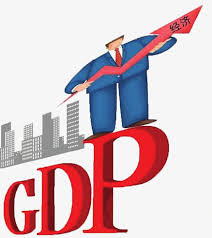
The recent global economic outlook report by IMF and the annual outlook report by ADB are both cases in point. One distinctive feature of India’s growth is its ability to grow amid an all round global declining trend with slow growths visible in a few pockets.
The shaping up of Indian economy in the past few years is an interesting story. The country has earned the distinction of having found a regular reference point in many international forums and not for wrong reasons. The recent global economic outlook report by IMF and the annual outlook report by ADB are both cases in point. One distinctive feature of India’s growth is its ability to grow amid an all round global declining trend with slow growths visible in a few pockets.
It has been projected by IMF that world GDP that grew by 3.8% in 2017 and by 3.6 % in 2018 is likely to drop down to 3.3% in the current year and rising to 3.6% in 2020.
The primary reasons identified are: escalation of US-China trade tensions, financial tightening in China, economic stress in Argentina and Turkey, growth constraints in auto sector due to compliance to Euro norm in Germany. In order to boost the economy through infusion of fresh investment out of deficit financing (a standard Keynesian prescription) a Modern Monetary Theory (MMT) is propagated. It has been acknowledged that fiscal policy has a specific role to play for macrostabilisation. However, money financing to bridge fiscal deficits has to be within a small band with an eye to inflation to minimise the adverse impact of growth on equity.
In the last one year, the US Federal Reserve, the Central Bank of Europe, Bank of England and Bank of China have all resorted to accommodate the higher liquidity demand. In India, the bank capitalisation was a welcome step, and currently bank credit has grown by 7.0% in FY17 to 11.9% in FY18.
The repo rate, albeit delayed, was brought down by 50 basis points in two successive tranches. However, this has not been immediately translated in reducing the market rate of interest. This is predictably linked with rising NPAs in major commercial banks in India who have become highly risk averse in extending credit to the commercial sector. The supporting factors in relaxing the credit norms have been provided by both Headline WPI and Core CPI. It is seen that WPI in FY18 rose to 2.74% and wet up to 3.18% in FY19.
Conversely, the CPI that rose by 4.28% in 2017-18 came down to 2.86% in 2018-19. IMF has projected India to grow by 7.3% in the current year from 7.1% in 2018 and is slated to grow by 7.5% in 2020. The corresponding projection for China is 6.3% in 2019 from 6.6% in 2018 and is to grow by 6.1% in 2020.
A look at the projections by ADB indicates that while China has achieved a GDP growth of 6.6% in 2018, it is projected to rise by 6.3% in the current year and marginally declining to 6.1% in next year (2020). India that grew by 7.0% in 2018 is slated to rise by 7.2% in 2019 and by 7.3 % in 2020.
ADB has identified restructuring of Chinese economy and financial tightening as the main cause for lowering of growth prospect. For India, it has identified poor agricultural growth (by pushing down demand) and slow growth in Private Final Consumption Expenditure to be the primary factors that has lowered GDP growth.
As per CSO data on AE for GDP , the GVA in agriculture grew by 5.0% in FY18, went down to 2.7% in FY19. As compared to agriculture, the GVA in industry went up by 5.9% in FY18 and rose by 7.7% in FY19. The behaviour of the economic parameters in implied Q4 of FY19 reveals a few weaknesses of Indian economy, which must be addressed fully if India’s growth story is to maintain the momentum.
The implied real GDP growth in Q4 is 6.4%, the lowest in recent period. The GDP growth was led by PFCE, which enhanced its share in GDP by 0.5% to reach at 59.5% in FY19 and partially by GFCF that rose from 28.6% of GDP in FY18 to 28.9% of GDP in FY19. All forecasts indicate a better performing Indian economy for FY20.
For steel industry to maintain its consumption growth of around 7.5%, it is essential that GFCF as a percentage of GDP rises from 28.9% to 32.0% at least in order to stimulate demand from the capital goods and construction sector. A stable growth in PFCE is to grow by 9.0%, which would provide ample support for the demand growth in automobile including two wheelers, tractors and other components of consumer durable sector. The real estate sector, including affordable housing segment, is also dependent on rising household expenditure that can be further facilitated by growth in non-food credit growth and lowering of market rate of interest.
Article Credit: FE
